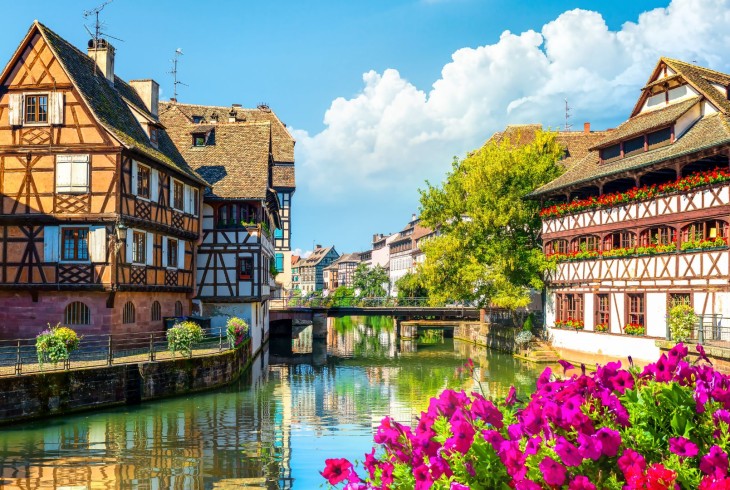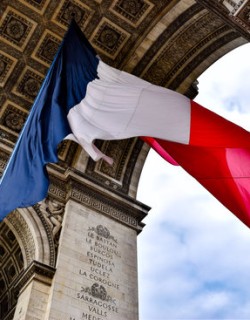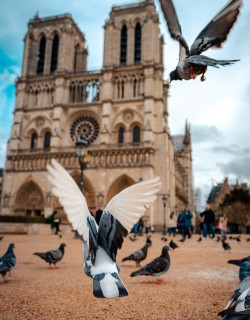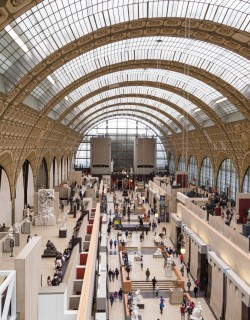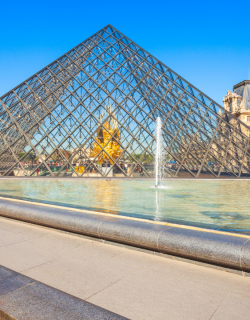Explore easily accessible out-of-town wonders, all while having both morning-time café crème and a late evening bistro beer in Paris.
STRASBOURG
When it comes to things to see and do, Paris really packs a punch. You could come back a dozen times and still leave feeling as though you’d just scratched the surface. Though you might feel like you’re cheating on her by going out of town, Paris won’t mind at all if you venture out beyond the Périphérique – the capital’s multi-lane ring road – to meander further afield for a provincial pause. And the City of Lights will still be there for you to embrace when you return to her that same evening.
Each of the places we’ve selected can certainly be reached by car, if you prefer the freedom of renting a vehicle and getting around on your own. For many of the places on our list, there are shuttle bus options as well. But we’ve made a specific point of identifying spots that are also well connected by France’s excellent and affordable network of trains.
Today we’re off to the surprising city of Strasbourg. All aboard!

The largest city in Alsace and the region’s capital, Strasbourg proper is home to nearly 300,000 people, and the population of the metropolitan area (including the part that lies within Germany) is almost 1,350,000.
Besides being the economic engine of northeastern France, Strasbourg is one of the three European capitals, along with Brussels and Luxembourg. The Council of Europe, the European Parliament, and the European Court of Human Rights, and a few other institutions of the European Union, are based here. The University of Strasbourg counts about 57,000 students, twenty percent of whom are from other countries. All of this lends an air of cosmopolitan sophistication to this provincial city.
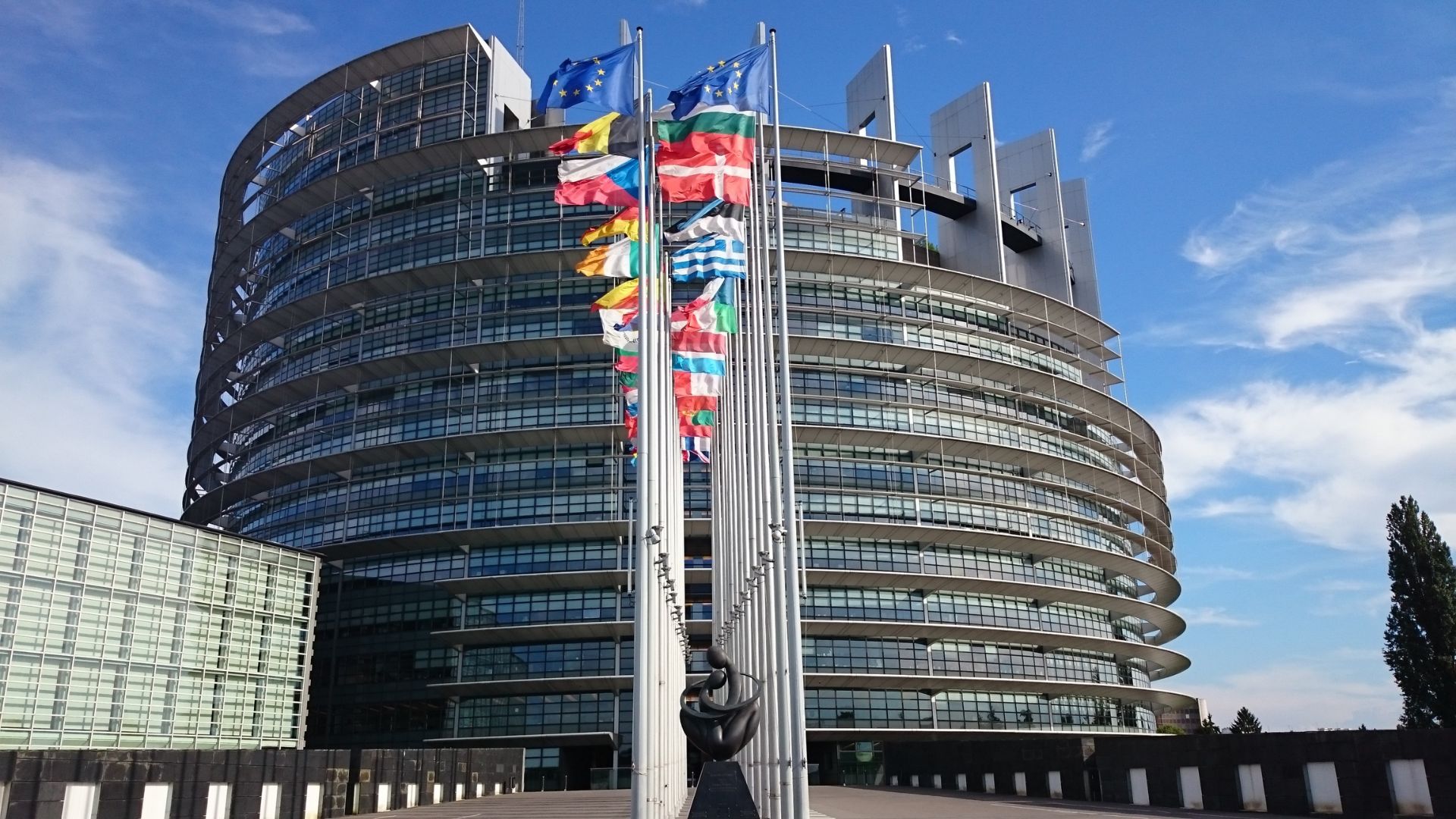
The real appeal of Strasbourg, though, is due principally to geography. For centuries, France has considered the Rhine River as one of the Hexagon’s natural borders. And for centuries, Germany has disagreed. The historic riverside region of Alsace has passed from one country to the other since Charlemagne’s grandchildren divided up his hard-won empire in the 9th century. The inevitable mixing and mingling of tongues and tastes, of customs and cuisines, makes Strasbourg one of the most fascinating cities in all of France.
The trip by train from Paris’ Gare de l’Est runs an hour and 45 minutes to 2 hours. You’ll be hopping off at Strasbourg’s Gare Centrale, and a five-minute walk brings you into the very heart of the historic city, the Grande Île. Bordered by the Ill River and one of its many branches, the Canal du Faux-Rempart, this little island is home to myriad medieval half-timbered houses, traditional restaurants and beerhalls, and the gob-smacking gothic Cathedral of Notre-Dame de Strasbourg. From the middle of the 17th century and for nearly 200 years, this was the tallest building in the world. The square in front of the cathedral features splendid spots for soaking in the sun when the weather is agreeable, and in December it is the venue of one of the oldest and finest Christmas Markets in all of Europe. If you’ve got the energy for the 332-step climb, the view from the cathedral’s roof will have you lording and ladying it over the whole of the city, as well as the surrounding countryside from the Vosges to the Black Forest.

At the southwest end of the island is the area known as la Petite France. It is charming, picturesque, overrun with tourists during the heady days of summer, and absolutely worth ambling around anyway. Restaurants along the riverfront are the most enviable spots for mealtime. During high season, you will need to plan ahead to reserve your spot. Be sure to specify inside or outside, as many of them have quayside tables.
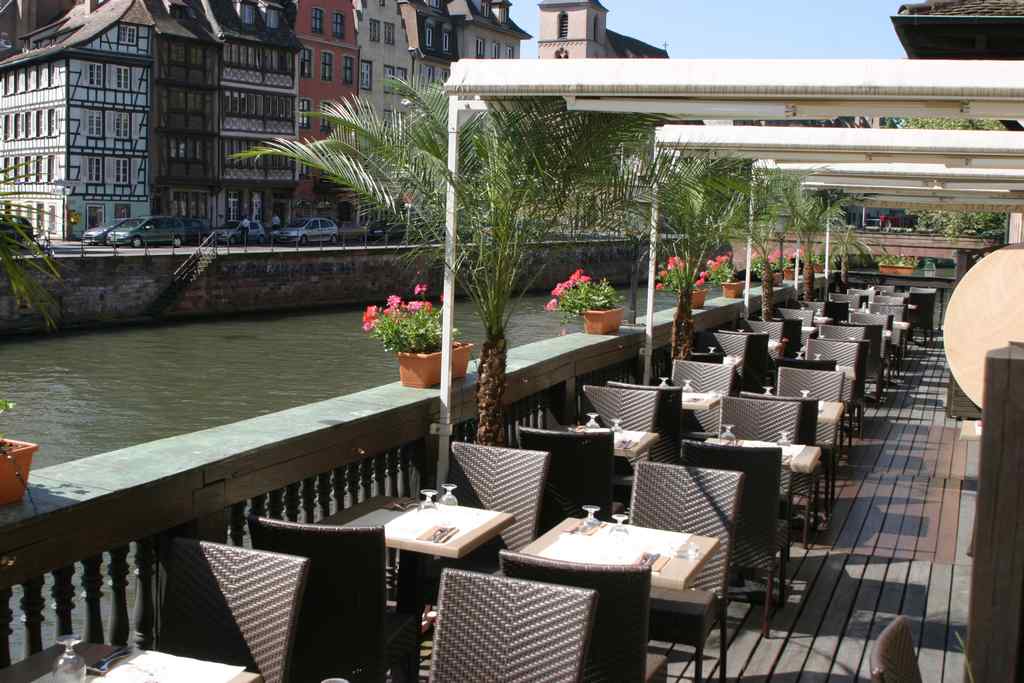
You will also want to do a bit of research, looking at reviews. Here’s a pro traveler tip: look at reviews written by visitors from France and Germany. They’re the ones who will really know if the food is properly prepared, and it’s easy enough to run what they’ve written through online translators. Keep an open mind, though, because European reviewers tend to have very high standards, and 5-star ratings are rare indeed. For a spot frequented even by the most demanding locals, try Chez Yvonne (10, rue du Sanglier). Just a couple of blocks from the cathedral but nestled in a rabbit’s warren of winding narrow streets, the restaurant offers delectable versions of local dishes, like liver quenelles with cream and sautéed apples, and black pudding with apple confit. Délicieux! Sehr lecker!
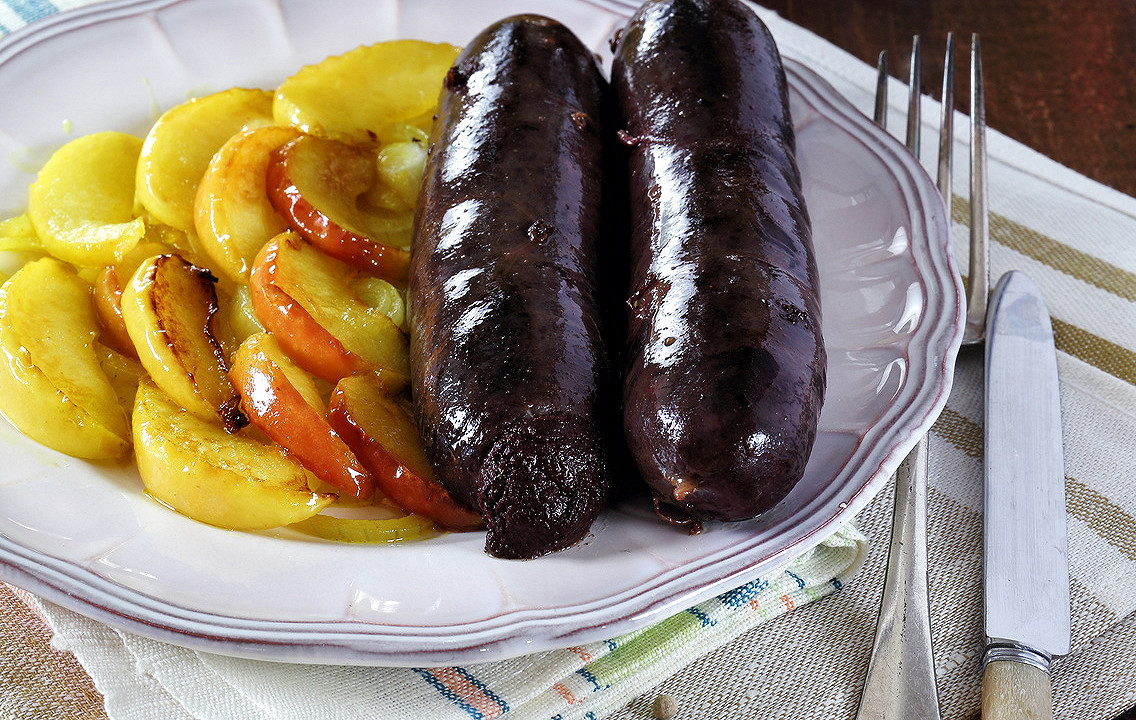
You won’t want to leave Strasbourg without taking a boat cruise through the canals. Most boats are heated in the winter and air-conditioned in the hottest part of the summer, so this can be a welcome respite from the elements and a chance to rest your feet during a long day of exploring. There are a number of companies that operate boat tours, but they are so sought-after that it’s always best to reserve your place well ahead of time, regardless of the season.

While la Petite France is at the southwestern tip of the island, just across the canal to the northwest is the area called Neustadt, literally “New City”. Development began here in the aftermath of the Franco-Prussian War in the later 1800s. The war resulted in the collapse of France’s Second Empire and the birth of the German Empire, declared in the hallowed halls of Versailles. Alsace and Lorraine were annexed to the new Empire, and construction in Strasbourg’s Neustadt quarter – which continued until the beginning of the First World War in 1914 – was an expression of German identity and pride. Because Strasbourg was spared the largescale devastation suffered by so many city centers in Germany during the Second World War, the expansive Neustadt neighborhood is considered by many to be the best surviving example of German Imperial architecture. Practically a city within a city, the Neustadt was conceived to feature broad boulevards, theaters, schools, parks, churches, and stately apartment buildings with elegant shops and restaurants for fine dining on the ground floor. In addition, the German authorities located a number of administrative offices in the area, bestowing an air of power and importance.
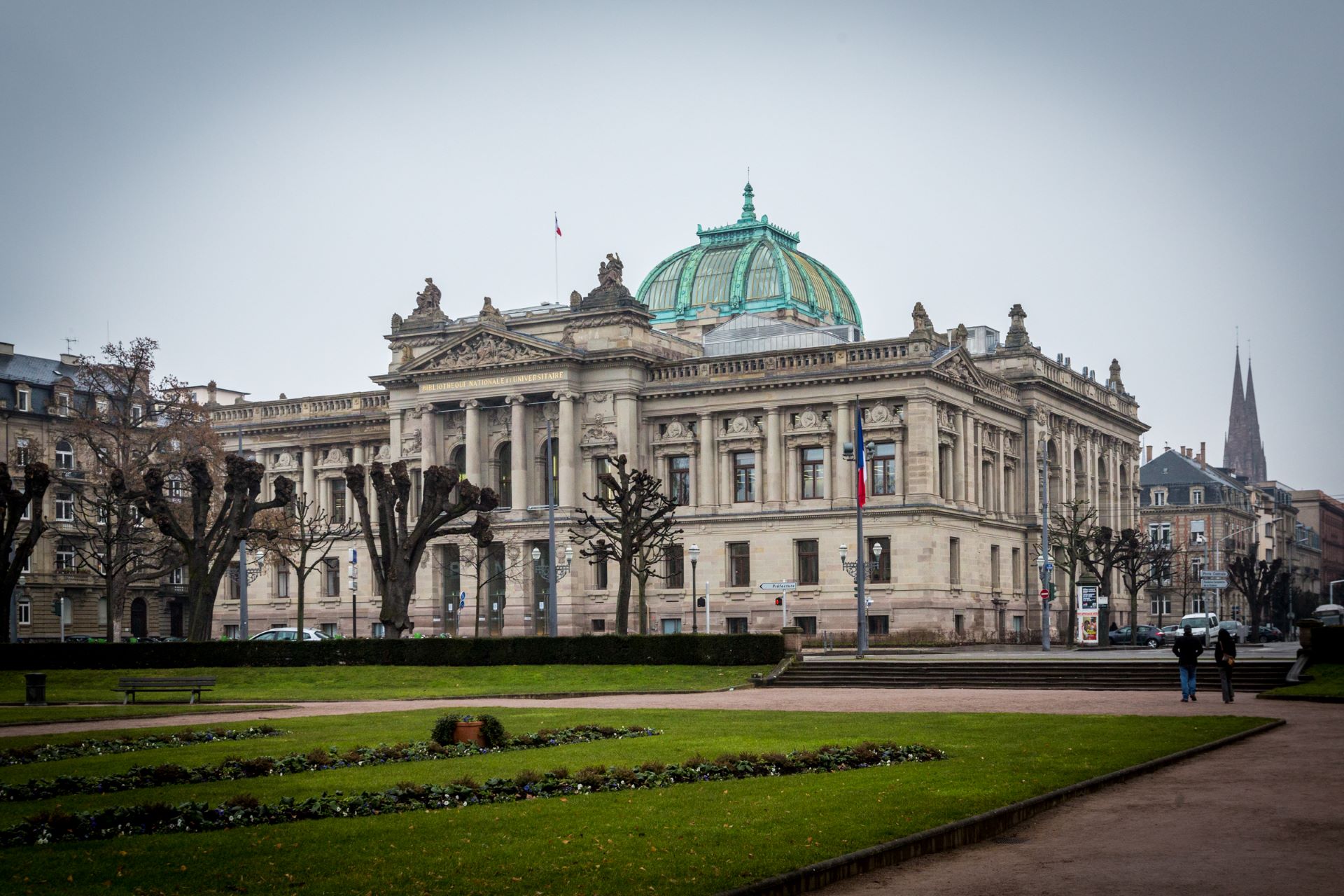
The Neustadt is a showcase of the “Neo”: Neo-Byzantine, Neo-Romanesque, Neo-Gothic, Neo-Renaissance, and one might even say Neo-Haussmanian, like the area of the recently-completed Grand Boulevards in Paris. Of particular note are the imposing Rhine Palace, built as a residence for the Imperial family, and, facing it from just across the river, the University Palace. Connecting the two is the Avenue de la Liberté, Imperial Strasbourg’s answer to Paris’ Avenue des Champs-Elysées.
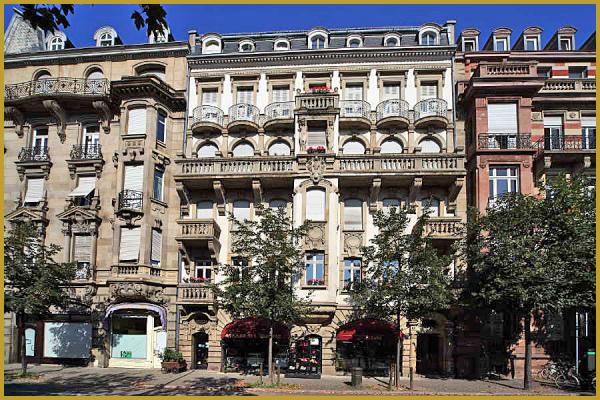
No visit to Strasbourg would be complete without a pint of proper Alsatian beer. With a history in Strasbourg for nearly 800 years, the city’s brewing industry truly came into its own in the second half of the 19th century. Connected by a new railway line to Paris, Strasbourg had access to the capital, and the brewers took full advantage of it. Alsace remains France’s most important brewing region: 60 % of all the beer consumed in the Hexagon is brewed here, and this is where nearly all of the country’s hops are grown.
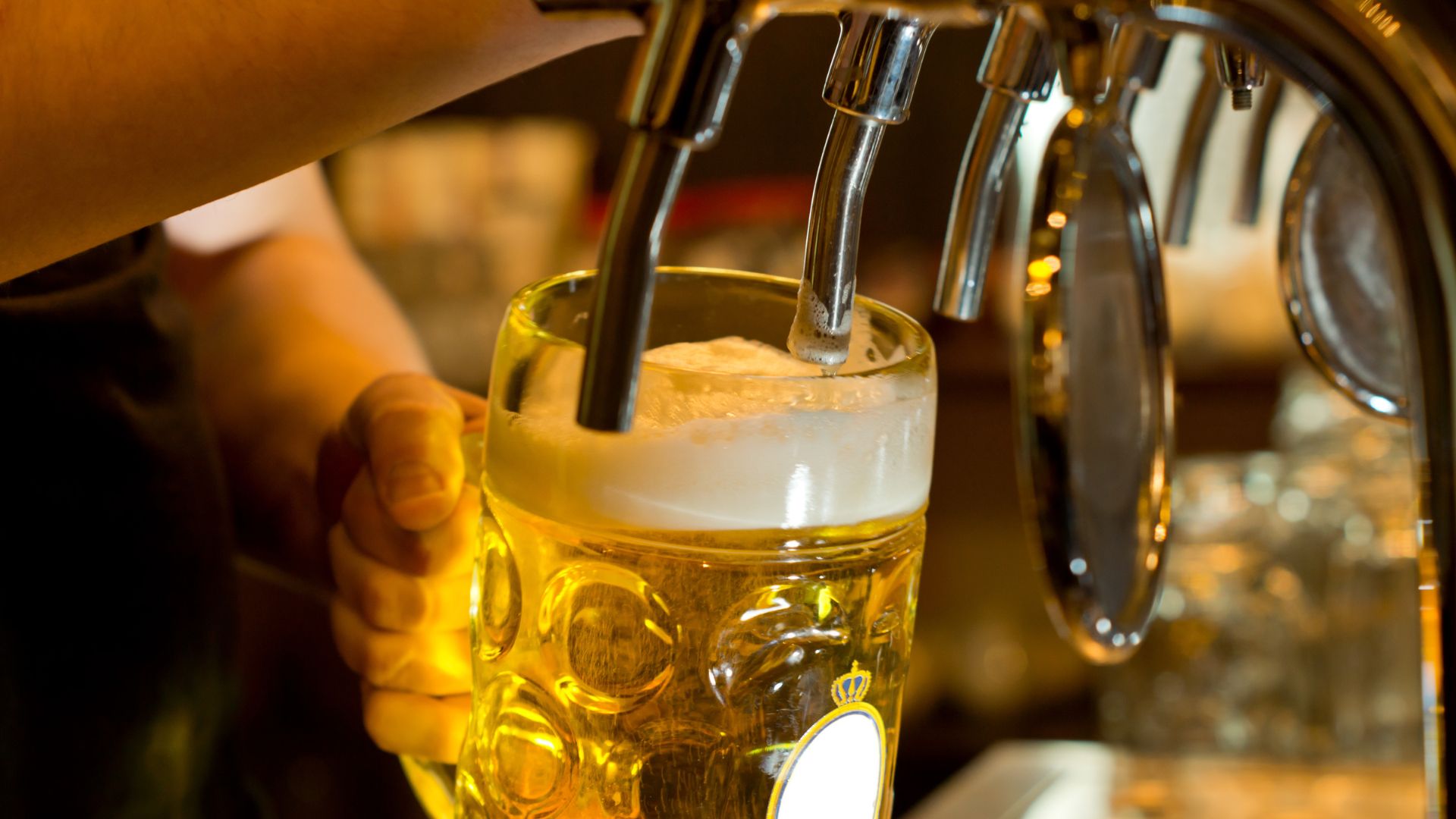
For a taste of high-style tradition right in the city center, stop in at the Brasserie Floderer (8, rue de l’Outre). Settle into your seat surrounded by the cosmopolitan elegance of the Jugendstil, Imperial Germany’s interpretation of Art Nouveau. It’s a treat for the senses that you won’t forget. If, however, you’re interested in a revisitation of classic brews, along with some modern experimental alternatives, nestle in among the coppers in the urban-funky but homey atmosphere of La Lanterne Microbrasserie (5, rue de la Lanterne). It sits along a spotlessly narrow street just a few blocks south of the grandiose Place Kléber, and you’re as likely to find local aficionados here as the more intrepid and well-informed visitors, such as yourselves! The beer is magnificent in both brasseries, and you have the option to just enjoy your beer or have dinner along with it: fine dining at the Floderer and excellent home-style grub at La Lanterne.
The two-hour train trip will have you back at your hotel in Paris in time for a late evening bistro beer – just to stay in theme!
